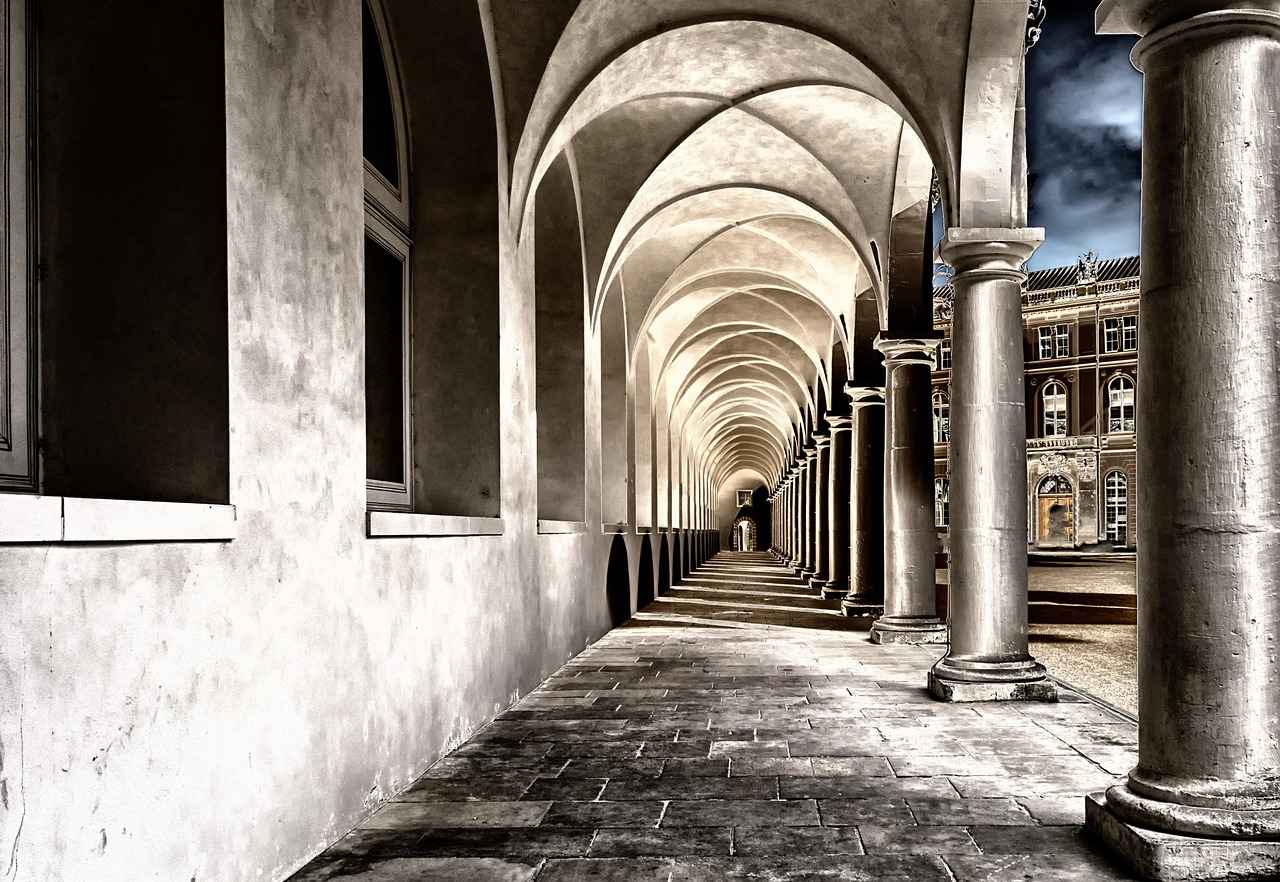This article delves into the realm of anime, showcasing the most visually stunning series ever created. These works not only highlight exceptional artistic achievements but also introduce unique styles that have left a lasting impact on both the anime industry and viewers globally. The evolution of animation techniques has played a significant role in shaping these masterpieces, blending traditional artistry with modern technology.
The Evolution of Anime Animation Techniques
Over the decades, anime has witnessed a remarkable transformation in animation techniques. From the early days of hand-drawn frames to the incorporation of CGI, advancements in technology have revolutionized how stories are told visually. This evolution has led to breathtaking visuals in contemporary series, captivating audiences and setting new standards in the industry.
Top 10 Visually Stunning Anime Series
- Your Name (Kimi no Na wa): A film celebrated for its intricate backgrounds and stunning visuals, merging traditional and digital animation techniques.
- Demon Slayer: Kimetsu no Yaiba: Known for its fluid animation and dynamic fight scenes, this series captivates with its unique blend of 3D and 2D animation.
- Violet Evergarden: Renowned for its emotional storytelling, this series features meticulously crafted visuals that enhance its narrative depth.
The Role of Color and Lighting in Anime
Color palettes and lighting techniques are crucial in shaping the aesthetic of anime. They influence mood and atmosphere, significantly enhancing viewer engagement. For instance, the use of vibrant colors can evoke feelings of joy, while darker tones might convey sadness or tension.
Impact of Animation on Storytelling
The animation style in anime deeply influences storytelling. Visual artistry can elevate narrative elements, character development, and emotional resonance. Techniques like symbolism and visual metaphors allow complex themes to be conveyed without relying solely on dialogue.
The Future of Anime Animation
As technology continues to advance, the future of anime animation looks promising. Emerging technologies, including virtual reality and artificial intelligence, are set to revolutionize animation techniques and storytelling, paving the way for new artistic movements that challenge the norms of visual storytelling.
In conclusion, the world of anime is rich with visually stunning series that not only entertain but also push the boundaries of artistic expression. As we look forward to future innovations, it is clear that the beauty of anime will continue to evolve, captivating audiences for generations to come.
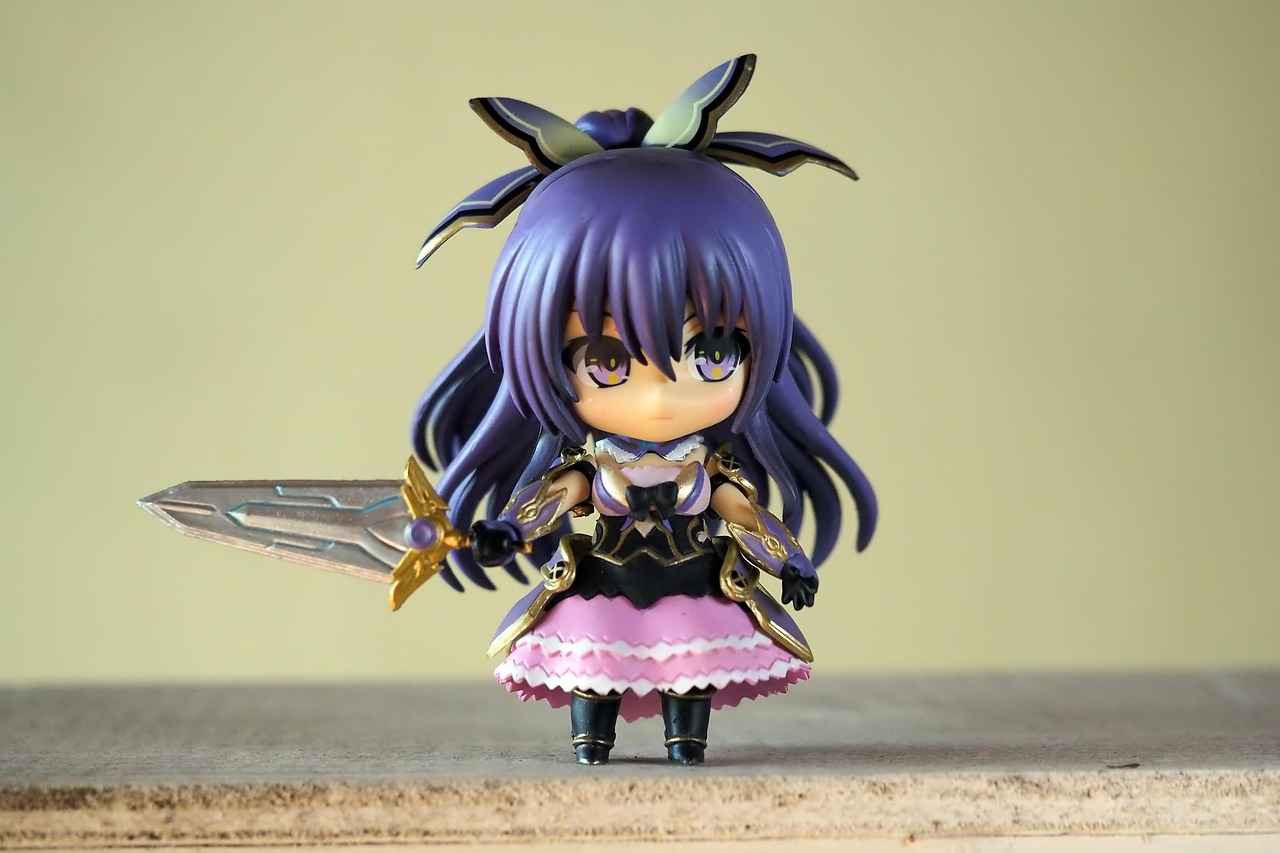
The Evolution of Anime Animation Techniques
Over the decades, anime has transformed remarkably, evolving from simple hand-drawn frames to intricate digital masterpieces. This evolution showcases not only technological advancements but also a significant leap in artistic expression. The journey of anime animation techniques reflects a blend of tradition and innovation, leading to the breathtaking visuals we admire in contemporary series today.
The early days of anime were characterized by limited color palettes and simple animations, primarily due to technological constraints. However, as animation technology advanced, so did the complexity and depth of visual storytelling in anime. The introduction of digital animation in the late 1990s marked a turning point, allowing creators to explore new artistic horizons.
One of the most significant advancements has been the integration of 3D animation techniques alongside traditional 2D styles. Series like Demon Slayer: Kimetsu no Yaiba exemplify this integration with fluid action sequences that captivate audiences. The use of CGI has allowed for dynamic backgrounds and enhanced visual effects, creating a more immersive viewing experience.
Furthermore, the artistry in anime has evolved to include rich, detailed backgrounds that complement the characters and narratives. Studios such as Ufotable and Kyoto Animation have pushed the boundaries of visual quality, crafting scenes that are not only beautiful but also serve to enhance the storytelling. For instance, in Violet Evergarden, each frame is meticulously designed, creating a visual feast that resonates with viewers emotionally.
As we look to the future, the potential for further evolution in anime animation techniques remains vast. Emerging technologies such as virtual reality and artificial intelligence are set to revolutionize how stories are told and experienced. With these advancements, we can expect even more breathtaking visuals that challenge our perceptions of animation.
In conclusion, the evolution of anime animation techniques is a testament to the creativity and innovation within the industry. As technology continues to advance, it will undoubtedly shape the future of anime, offering viewers new and exciting ways to engage with this beloved art form.
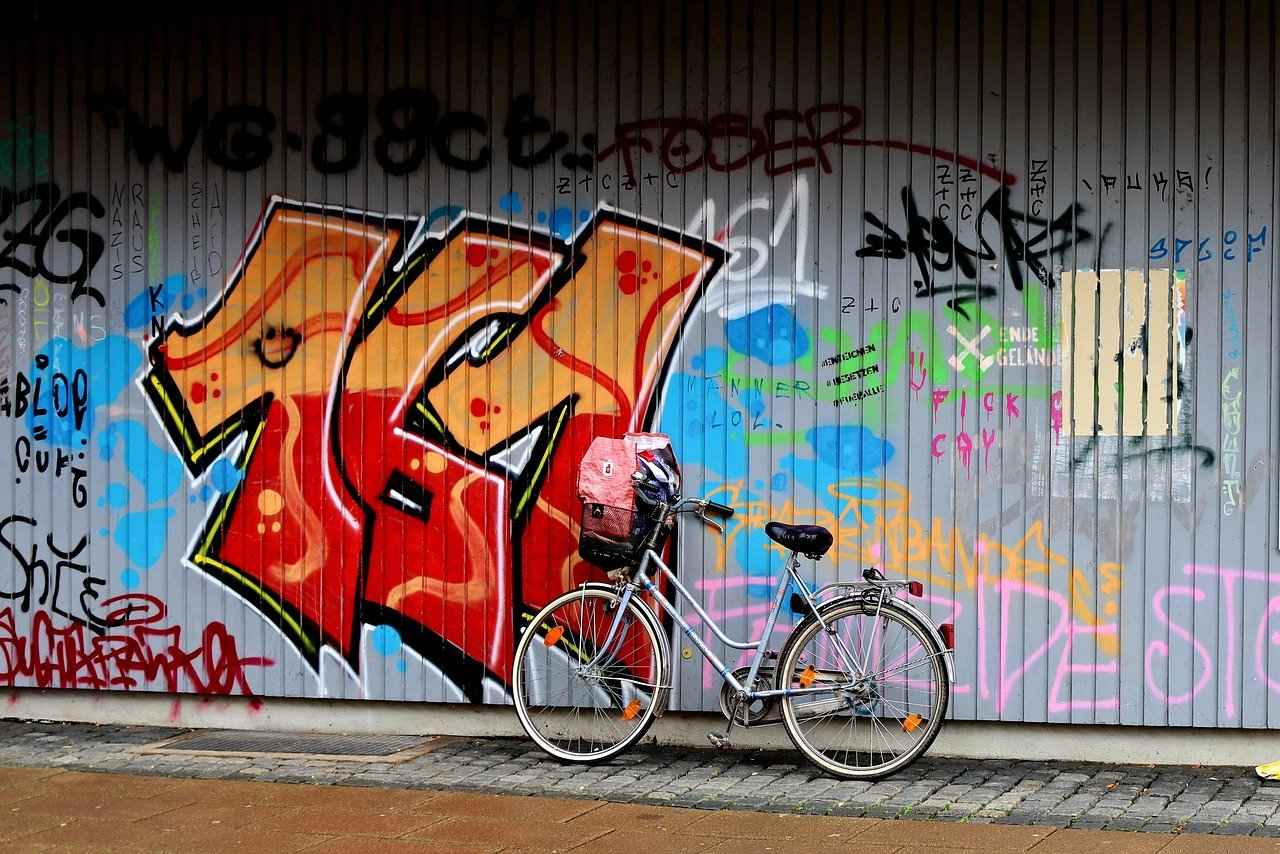
Top 10 Visually Stunning Anime Series
Anime has evolved into a vibrant art form, showcasing breathtaking visuals that captivate audiences worldwide. In this article, we delve into the top ten visually stunning anime series, highlighting their unique artistic styles, memorable scenes, and the talented creators behind them.
- Your Name (Kimi no Na wa): This film is famous for its intricate backgrounds and stunning color palettes, blending traditional and digital animation techniques to create a visually enchanting experience.
- Demon Slayer: Kimetsu no Yaiba: Renowned for its fluid animation and dynamic fight sequences, this series employs a combination of 3D and 2D techniques, resulting in visuals that are both captivating and immersive.
- Violet Evergarden: Celebrated for its emotional depth and stunning visuals, this series features meticulously crafted backgrounds that enhance the narrative, making every scene a visual masterpiece.
- Attack on Titan: Known for its intense action sequences and dramatic landscapes, the series uses a unique visual style that amplifies the tension and excitement of its storyline.
- Land of the Lustrous: This series stands out with its innovative use of CGI, creating a visually striking world that is both beautiful and haunting, showcasing the potential of modern animation.
- Fate/stay night: Unlimited Blade Works: With its breathtaking fight scenes and detailed character designs, this anime utilizes a blend of traditional and digital techniques to create a visually stunning experience.
- Spirited Away: A classic by Studio Ghibli, this film is renowned for its lush animation and imaginative world, filled with vibrant colors and intricate details that leave a lasting impression.
- Mob Psycho 100: This series combines unique art styles with dynamic animation, creating a visually engaging experience that perfectly complements its quirky narrative.
- Made in Abyss: Known for its breathtaking backgrounds and emotional storytelling, this series combines dark themes with stunning visuals that draw viewers into its mysterious world.
- Howl’s Moving Castle: Another masterpiece from Studio Ghibli, this film features whimsical designs and vibrant colors, creating a magical atmosphere that enchants viewers.
These anime series not only showcase exceptional artistry but also demonstrate the profound impact that visual storytelling can have on the viewer’s experience. The creative minds behind these works continue to push the boundaries of animation, making anime a truly unique and captivating medium.
1. Your Name (Kimi no Na wa)
Your Name (Kimi no Na wa) is a masterful blend of artistry and storytelling, representing a significant milestone in the evolution of anime films. This critically acclaimed film is renowned for its stunning visuals and intricate backgrounds, blending traditional hand-drawn techniques with modern digital animation for a mesmerizing effect. The film’s creators, Makoto Shinkai and his team, have crafted a visual narrative that not only captivates the audience but also enhances the emotional depth of the story.
The animation in Your Name is a testament to the meticulous attention to detail that defines the anime industry. Each frame is a work of art, showcasing vibrant colors and breathtaking landscapes that transport viewers into the world of the characters. The film’s use of dynamic lighting and innovative color palettes evokes a range of emotions, from the warmth of nostalgia to the chill of suspense.
Furthermore, the integration of traditional and digital techniques allows for a unique visual experience. Hand-drawn elements are seamlessly blended with CGI to create fluid movements and realistic environments. This fusion not only highlights the characters’ emotional journeys but also reflects the cultural significance of the settings, whether it be the bustling streets of Tokyo or the serene countryside.
In addition to its artistic achievements, Your Name has left a lasting impact on the anime industry. It has inspired a new generation of animators to push the boundaries of visual storytelling, emphasizing the importance of aesthetics in conveying complex narratives. The film’s success has also sparked discussions about the future of anime, where technology and artistry will continue to evolve together.
In conclusion, Your Name (Kimi no Na wa) stands as a landmark film that not only showcases the beauty of anime but also enriches the viewer’s experience through its profound storytelling and visual innovation. It serves as a reminder of the power of animation in bridging emotions and narratives, making it a must-watch for both anime enthusiasts and newcomers alike.
2. Demon Slayer: Kimetsu no Yaiba
Demon Slayer: Kimetsu no Yaiba is a remarkable anime series that has taken the world by storm, renowned for its fluid animation and dynamically choreographed fight scenes. This series stands out for its innovative use of both 3D and 2D animation, which creates visually stunning sequences that leave audiences in awe. The seamless integration of these techniques allows for breathtaking visuals that not only captivate viewers but also enhance the storytelling experience.
The series follows Tanjiro Kamado, a young boy who becomes a demon slayer after his family is brutally murdered by demons, and his sister Nezuko is turned into one. As Tanjiro embarks on his journey to avenge his family and find a cure for Nezuko, viewers are treated to a visual feast that showcases the beauty of traditional Japanese landscapes, intricate character designs, and meticulously crafted action sequences.
One of the key elements that contribute to the anime’s visual appeal is its use of color and lighting. The creators expertly employ vibrant color palettes and dynamic lighting techniques to evoke emotions and set the tone for each scene. This attention to detail not only enhances the aesthetic quality of the series but also deepens the audience’s connection to the characters and their struggles.
Moreover, the series has been a game-changer in the anime industry, influencing countless other creators and setting new standards for animation quality. The impact of Demon Slayer can be seen in its widespread popularity, leading to numerous awards and accolades, as well as a significant boost in merchandise sales.
In conclusion, Demon Slayer: Kimetsu no Yaiba is a testament to the power of animation as a storytelling medium. Its breathtaking visuals, combined with a compelling narrative, make it a must-watch for both anime enthusiasts and newcomers alike. As we look to the future, it will be exciting to see how this series continues to shape the landscape of anime animation.
3. Violet Evergarden
Violet Evergarden stands out as a masterpiece in the world of anime, celebrated not only for its breathtaking visuals but also for its profound emotional storytelling. The series follows the journey of Violet, a former soldier who seeks to understand the meaning of love and the words “I love you” after the war. This thematic depth is beautifully complemented by stunning animation that captivates viewers from the very first episode.
The animation quality in Violet Evergarden is nothing short of extraordinary. Each scene is meticulously crafted, showcasing a blend of vibrant colors and intricate details that breathe life into the characters and their surroundings. The backgrounds are often painted with such precision that they evoke a sense of realism, transporting viewers into the world of the story. This attention to detail enhances the narrative’s emotional weight, making each moment resonate more deeply.
Moreover, the character designs in Violet Evergarden are thoughtfully executed. Each character possesses unique traits and expressions that reflect their personalities and emotional states. The animators skillfully use subtle facial movements and body language to convey complex emotions, allowing audiences to connect with the characters on a personal level.
The series also employs symbolism through its animation style. For instance, the use of light and shadow not only enhances the visual appeal but also serves to underline the characters’ emotional journeys. The interplay of colors, particularly in scenes of nostalgia or sorrow, enriches the storytelling, making it a profound viewing experience.
In conclusion, Violet Evergarden is a shining example of how animation can elevate storytelling in anime. Its combination of stunning visuals, intricate character designs, and deep emotional narratives makes it a must-watch for both anime enthusiasts and newcomers alike. This series not only showcases the art of animation but also leaves a lasting impact on its viewers, inviting them to reflect on their own experiences of love and loss.
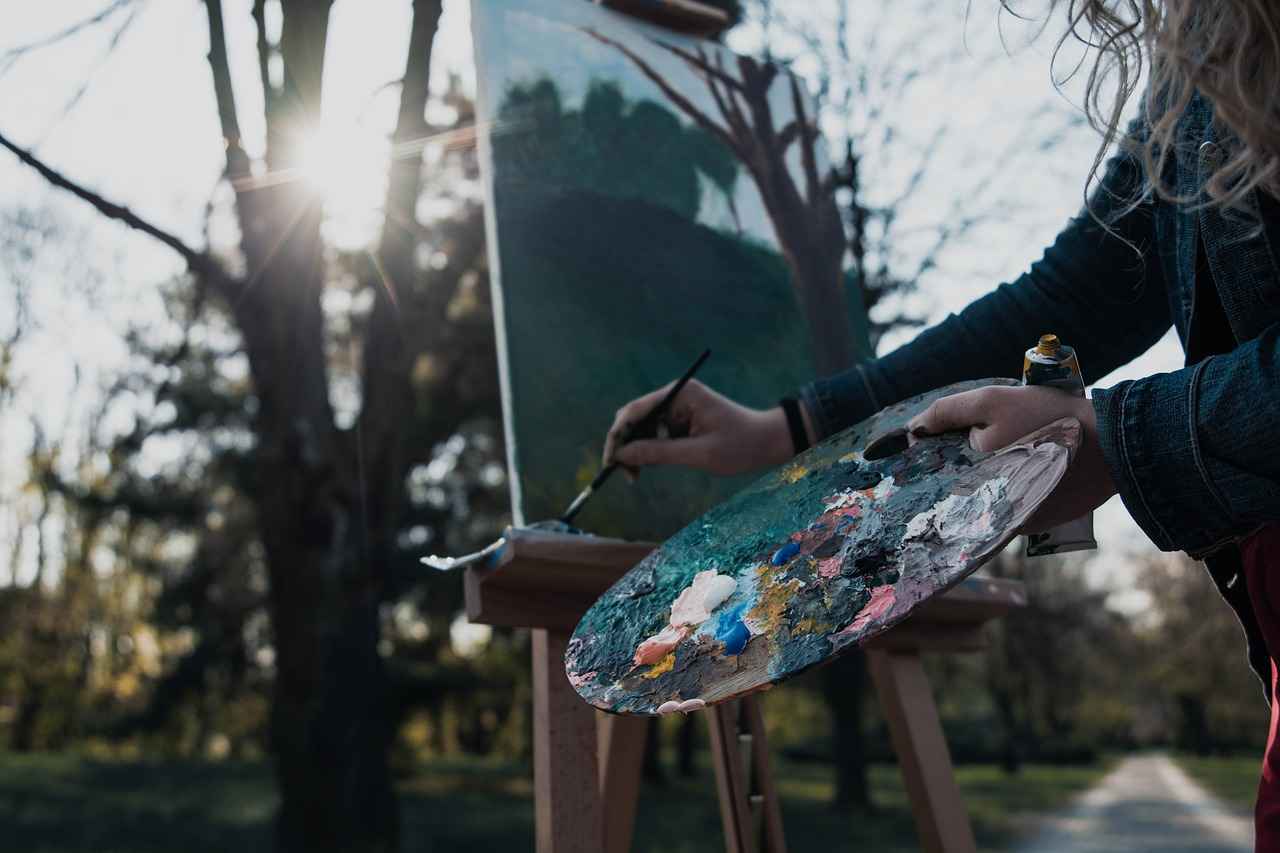
The Role of Color and Lighting in Anime
is a crucial aspect that significantly influences the overall aesthetic and emotional resonance of various series. By carefully selecting color palettes and employing innovative lighting techniques, creators can effectively shape the mood and atmosphere, enhancing viewer engagement.
Color palettes in anime are not merely decorative; they serve as a narrative tool. For instance, warm colors such as reds and oranges can evoke feelings of excitement or passion, while cooler tones like blues and greens often convey calmness or sadness. This intentional use of color helps viewers connect with characters and their emotions on a deeper level.
Moreover, the symbolism of colors plays a significant role in storytelling. For example, a character wearing predominantly black may symbolize mystery or villainy, while bright colors could indicate innocence or joy. This visual language allows for a richer storytelling experience, where colors communicate emotions and themes without the need for dialogue.
In addition to color, lighting techniques are pivotal in creating atmosphere. Techniques such as chiaroscuro, which contrasts light and shadow, can add depth and drama to scenes. Ambient lighting, on the other hand, can create a softer, more intimate feeling, enhancing romantic or emotional moments. These techniques not only beautify the animation but also guide the viewer’s emotional response.
Furthermore, the interplay of color and lighting can significantly impact viewer engagement. A well-lit scene with a harmonious color palette can draw viewers in, making them feel part of the world being depicted. This immersive experience is what often makes anime memorable and impactful.
In conclusion, the thoughtful integration of color palettes and lighting techniques in anime is essential for crafting a compelling aesthetic. By influencing mood and atmosphere, these elements enhance viewer engagement and elevate the storytelling experience, making anime a unique and powerful medium for artistic expression.
Symbolism of Colors in Animation
In the realm of anime, colors are not merely aesthetic choices; they serve as powerful tools for symbolism, conveying a range of emotions, themes, and character development. By utilizing specific color palettes, creators can enhance the storytelling experience, allowing viewers to connect with the narrative on a deeper level.
Understanding Color Symbolism
Each color carries its own set of meanings and associations. For instance:
- Red: Often symbolizes passion, anger, or love. In anime, characters adorned in red may be depicted as fierce warriors or deeply emotional individuals.
- Blue: Represents calmness, sadness, or trust. A blue palette can create a serene atmosphere, often used in scenes of reflection or loss.
- Green: Often associated with growth, nature, and tranquility. It can signify a character’s development or connection to the environment.
- Yellow: Symbolizes happiness, energy, and optimism. Characters surrounded by yellow hues may exude positivity and enthusiasm.
Color in Character Development
As characters evolve throughout a series, their color schemes often change to reflect their development. For example, a character transitioning from innocence to experience may start with lighter colors and gradually incorporate darker tones, symbolizing their journey through challenges.
Enhancing Themes through Color
Moreover, color can be used to underscore central themes. In a story addressing identity, contrasting colors may highlight the internal struggles of the protagonist. The visual representation of these themes through color not only enriches the narrative but also engages the audience on an emotional level.
In conclusion, the symbolism of colors in anime is a testament to the artistry of visual storytelling. By carefully selecting color palettes, creators can evoke emotions, enhance character arcs, and deepen thematic resonance, making the viewing experience all the more profound.
Lighting Techniques in Anime
In the realm of anime, lighting techniques play a crucial role in shaping the visual narrative, enhancing the emotional depth and realism of animated scenes. Two prominent techniques that stand out are chiaroscuro and ambient lighting, both of which contribute significantly to the overall aesthetic and storytelling.
- Chiaroscuro: This technique involves the use of strong contrasts between light and dark, creating a dramatic effect that can highlight characters’ emotions and the tension within scenes. By skillfully manipulating light, artists can draw viewers’ attention to specific elements, enhancing the storytelling experience.
- Ambient Lighting: In contrast, ambient lighting provides a softer, more diffused light that envelops the scene. This technique is often used to create a sense of atmosphere, evoking feelings of warmth, tranquility, or even melancholy. It allows for a more natural representation of light, mimicking real-world conditions.
These innovative lighting techniques not only add depth but also support character development and thematic elements. For instance, a scene illuminated by chiaroscuro might depict a character grappling with inner turmoil, while a softly lit environment can symbolize peace or nostalgia.
Moreover, the integration of these techniques varies across different anime series, showcasing the creativity and artistic vision of the creators. For example, in the acclaimed series Your Name, the interplay of light and color is masterfully executed, enhancing the film’s emotional impact and visual splendor.
In conclusion, the use of advanced lighting techniques like chiaroscuro and ambient lighting in anime serves as a powerful tool for visual storytelling. By creating immersive atmospheres and emphasizing emotional nuances, these techniques elevate the viewer’s experience, making anime not just an art form but a profound narrative medium.
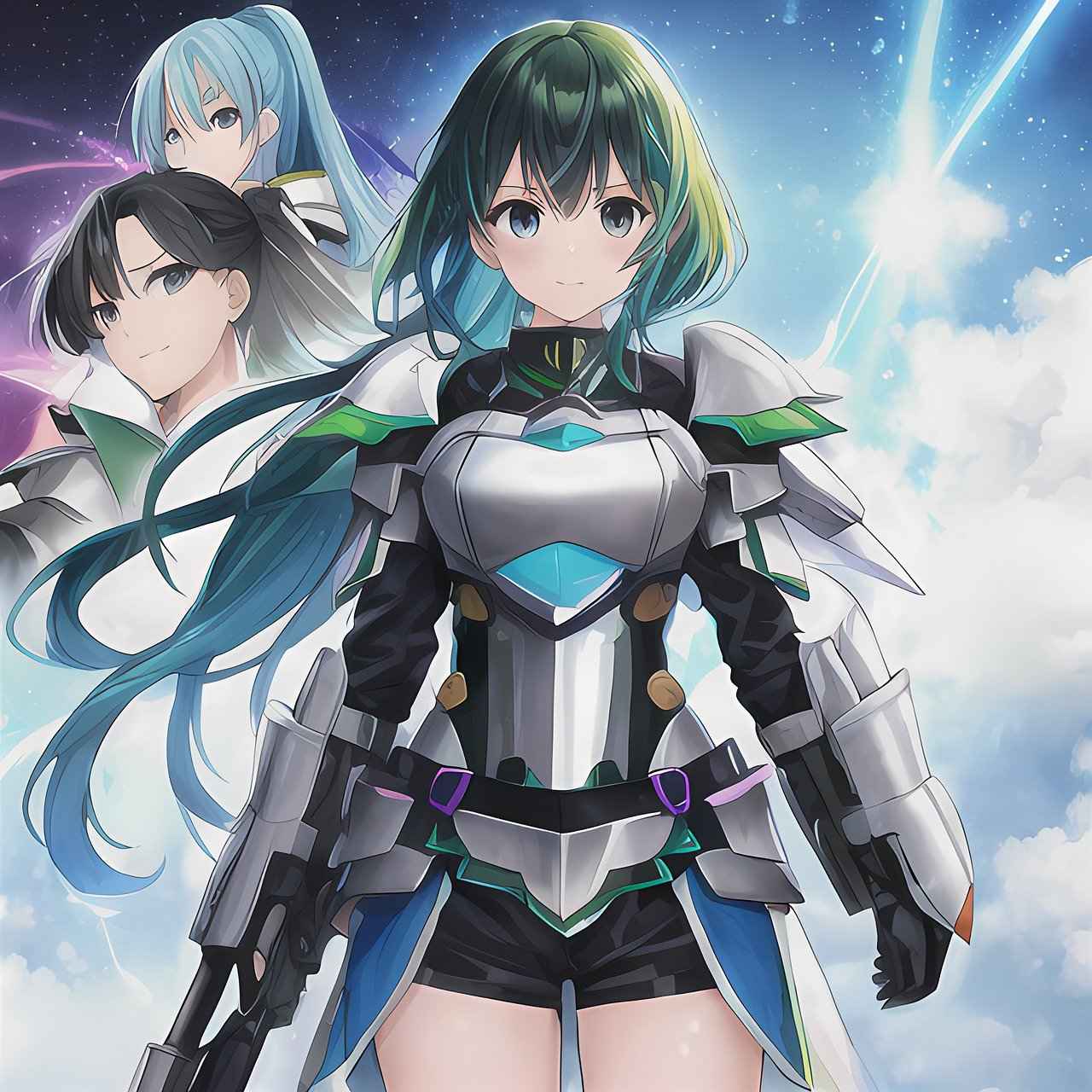
Impact of Animation on Storytelling
The world of anime is not just about vibrant characters and thrilling plots; it is also a canvas where animation style plays a pivotal role in shaping the storytelling experience. The unique visual artistry employed in anime enhances narrative elements, character development, and emotional resonance, creating a profound connection between the audience and the story.
Visual Artistry and Narrative Elements
Animation style significantly influences how stories are told in anime. For instance, the use of color palettes and lighting techniques can evoke specific emotions and set the tone for various scenes. Bright, saturated colors might be used to depict joy and excitement, while muted tones can convey sadness or tension. This artistic choice not only enhances the visual appeal but also deepens the audience’s understanding of the characters’ emotional states.
Character Development Through Design
Character design is another crucial aspect where animation style shines. Unique visual traits and expressive features can convey a character’s personality, background, and growth throughout the series. For example, a character with sharp angles and dark colors may represent a more antagonistic role, while softer, rounder shapes might indicate kindness or innocence. This visual representation aids in the audience’s connection to the characters, making their journeys more relatable and impactful.
Emotional Resonance in Storytelling
Moreover, the fluidity of animation can enhance emotional moments within the narrative. Techniques such as slow-motion sequences during pivotal scenes or dynamic action sequences can amplify the intensity of the story. By marrying visual artistry with storytelling, anime creators are able to evoke strong emotional responses from viewers, making them feel more invested in the characters’ journeys.
In conclusion, the interplay between animation style and storytelling in anime is a testament to the medium’s artistic potential. By leveraging visual artistry, creators enrich narrative elements, foster character development, and amplify emotional resonance, creating an immersive experience that captivates audiences across the globe.
Visual Storytelling Techniques
in anime are pivotal for conveying intricate themes and emotions that transcend mere dialogue. Through a combination of symbolism and visual metaphors, anime creators craft narratives that resonate deeply with viewers, allowing them to experience a range of feelings without relying solely on spoken words.
One of the most compelling aspects of visual storytelling in anime is its ability to use symbolism effectively. For instance, the recurring use of certain colors or objects can evoke specific emotions or represent broader themes. A character’s journey may be illustrated through their interactions with particular symbols, such as a blooming flower representing growth or a fading sunset symbolizing loss. This method enriches the narrative, inviting the audience to engage with the story on multiple levels.
Additionally, visual metaphors play a crucial role in enhancing storytelling. For example, a character’s struggle might be depicted through a stormy sea, symbolizing turmoil and conflict. These metaphors not only enrich the visual experience but also enable viewers to grasp complex ideas quickly and intuitively. By using such techniques, anime can convey profound messages about love, sacrifice, and the human condition without the need for extensive dialogue.
Furthermore, the integration of animation techniques—such as dynamic camera angles and fluid motion—serves to amplify these visual storytelling elements. The way a scene is framed or how characters move can dramatically alter the emotional impact of a moment. For instance, a close-up on a character’s face during a pivotal moment can draw viewers into their emotional state, fostering empathy and connection.
In conclusion, the art of visual storytelling in anime is a sophisticated blend of symbolism, visual metaphors, and innovative animation techniques. This unique approach allows creators to express complex themes and emotions in a way that resonates profoundly with audiences, making anime a powerful medium for storytelling.
Character Design and Development
In the realm of anime, character design plays a pivotal role in shaping the viewer’s experience and emotional connection to the story. The visual portrayal of characters is not merely an aesthetic choice; it is a fundamental aspect that influences how audiences perceive and relate to the narrative. From the very first frame, the design elements—such as colors, shapes, and facial expressions—serve to convey a character’s personality, background, and emotional state.
One of the key components of effective character design is the use of visual symbolism. For instance, a character designed with sharp angles and dark colors may be perceived as antagonistic or mysterious, while softer, rounder shapes and brighter colors often denote warmth and friendliness. This immediate visual cue helps establish a character’s role in the story, allowing viewers to form connections even before the character speaks.
Furthermore, character design evolves throughout an anime series, reflecting personal growth and changes in circumstances. This dynamic progression is crucial for character development, as it visually represents the journey a character undertakes. For example, a protagonist who begins their journey in simple, unadorned clothing may gradually adopt more intricate designs as they gain confidence and experience, symbolizing their growth and transformation.
The impact of character design extends beyond individual characters; it also influences the overall theme and mood of the series. A cohesive design style across characters can enhance the storytelling, creating a more immersive experience for the audience. This visual consistency allows viewers to engage more deeply with the narrative, fostering a stronger emotional investment in the characters’ journeys.
In conclusion, character design in anime is a vital element that significantly contributes to both character development and audience connection. By utilizing visual elements effectively, creators can craft memorable characters that resonate with viewers, ultimately enhancing the storytelling experience.
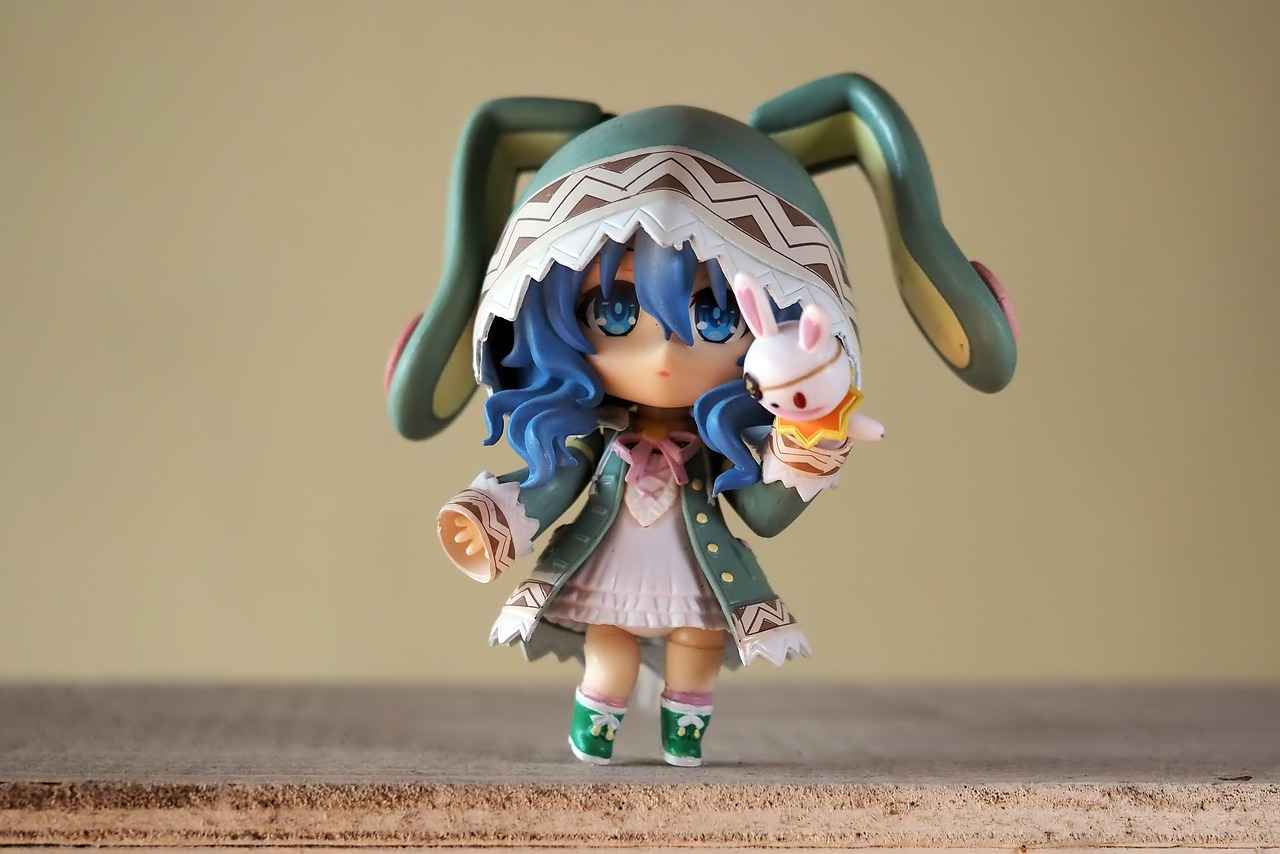
The Future of Anime Animation
The future of anime animation is set to witness a remarkable transformation driven by technological advancements and artistic innovations. As the anime industry evolves, several key trends are emerging that will shape the next generation of beautifully animated series.
One of the most significant trends is the integration of virtual reality (VR) and augmented reality (AR) into anime. These technologies offer immersive experiences that allow viewers to engage with stories and characters in unprecedented ways. Imagine being able to step into the world of your favorite anime and interact with its characters as if you were part of the narrative. This could revolutionize how stories are told and experienced, leading to a new genre of interactive anime.
Another exciting development is the use of artificial intelligence (AI) in animation production. AI tools can assist in various stages of the animation process, from generating backgrounds to creating fluid character movements. This not only speeds up production but also opens up new possibilities for artistic styles. As AI becomes more sophisticated, we may see unique visual aesthetics emerge, pushing the boundaries of traditional animation.
Additionally, the rise of independent creators and crowdfunding platforms is fostering a diverse range of artistic expressions within the anime community. These creators are experimenting with unconventional storytelling methods and visual styles, resulting in a rich tapestry of content that appeals to niche audiences. This democratization of anime production allows for innovative ideas to flourish, contributing to the overall evolution of the medium.
Finally, as global audiences become more engaged, there is a growing emphasis on cultural diversity in anime. Future series are likely to reflect a broader spectrum of cultural narratives and artistic influences, enriching the storytelling landscape and fostering greater inclusivity.
In conclusion, the future of anime animation is poised for exciting changes driven by technology and creativity. As these trends continue to unfold, they promise to deliver a new era of visually stunning and narratively rich anime that captivates audiences worldwide.
Emerging Technologies in Animation
The anime industry is on the brink of a transformative revolution, driven by emerging technologies such as virtual reality (VR) and artificial intelligence (AI). These advancements are reshaping not only the techniques used in animation but also the very essence of storytelling within the medium.
Virtual Reality: A New Frontier
Virtual reality offers an immersive experience that allows viewers to step into the world of anime like never before. By utilizing VR, creators can craft environments that viewers can explore, making the storytelling experience more interactive. Imagine being able to walk through the vibrant landscapes of your favorite anime series, engaging with characters and elements of the story in real-time. This level of immersion can deepen emotional connections and enhance narrative engagement.
Artificial Intelligence: Enhancing Creativity
Artificial intelligence is revolutionizing the animation process by automating tedious tasks such as in-betweening and background generation. This not only speeds up production times but also allows artists to focus on their creative vision. AI algorithms can analyze vast amounts of data to suggest color palettes, character designs, and even plot developments, thereby expanding the creative possibilities for anime storytellers. As a result, we may see more diverse narratives and innovative visual styles emerge.
Blending Traditional and Modern Techniques
The integration of VR and AI is not about replacing traditional animation techniques but rather enhancing them. By blending hand-drawn artistry with cutting-edge technology, creators can produce stunning visuals that honor the rich history of anime while pushing the boundaries of what is possible. This fusion could lead to a new era of anime that captivates both long-time fans and new audiences alike.
Conclusion: A Bright Future Ahead
As the anime industry embraces these emerging technologies, the potential for innovation in animation techniques and storytelling is limitless. The future of anime looks promising, with new artistic movements and technologies paving the way for a more engaging and visually stunning experience. The combination of VR and AI may well redefine how stories are told, making the anime medium more dynamic and interactive than ever before.
New Artistic Movements in Anime
The world of anime is continually evolving, with new artistic movements emerging that challenge traditional norms and push the boundaries of visual storytelling. These movements are not only redefining the aesthetics of anime but also enriching the narratives that accompany them.
One of the most significant aspects of these new movements is the diversification of animation styles. Creators are experimenting with various techniques, from hand-drawn art to cutting-edge digital animation. For instance, series like Land of the Lustrous utilize 3D animation to create a unique, gem-like aesthetic that captivates viewers and enhances the story’s themes of identity and transformation.
Another notable trend is the incorporation of mixed media. Artists are blending traditional animation with live-action elements, as seen in works like Fate/Grand Order: Absolute Demonic Front – Babylonia. This fusion creates a dynamic viewing experience that engages audiences on multiple levels.
- Innovative Storytelling: New creators are exploring unconventional narratives that challenge the viewer’s perception. Series like Keep Your Hands Off Eizouken! highlight the creative process of animation itself, offering a meta-commentary on the art form.
- Emphasis on Visual Poetry: Shows such as Made in Abyss utilize stunning visuals to evoke emotional responses, demonstrating how animation can function as a form of visual poetry that enhances storytelling.
Moreover, the rise of independent creators is fostering a rich environment for artistic experimentation. Platforms like Kickstarter have enabled many artists to fund their unique projects, leading to a surge in diverse narratives and styles that cater to niche audiences.
In conclusion, the are a testament to the medium’s potential for innovation and creativity. As creators continue to explore and redefine the boundaries of visual storytelling, audiences can expect an exciting future filled with breathtaking animation and compelling narratives.
